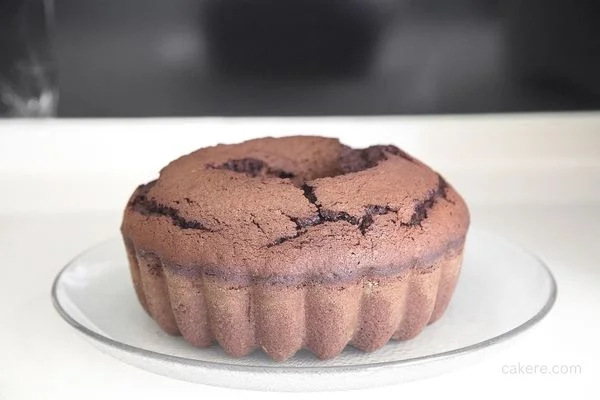Food cake, a beloved dessert enjoyed by people of all ages, has a rich history that dates back centuries. This delightful treat has undergone various transformations, evolving in both taste and preparation methods.

Origins of Food Cake
The story of food cake begins in ancient civilizations, where early forms of cake were created using basic ingredients such as flour, honey, and nuts.
The Egyptians and Greeks are known to have prepared sweetened bread-like treats, often flavored with fruits and spices. These primitive cakes laid the foundation for the decadent desserts we enjoy today.
Evolution of Food Cake
As civilizations progressed, so did the art of cake-making. During the Middle Ages, advancements in baking techniques led to the creation of lighter and fluffier cakes.
The addition of eggs as a leavening agent brought about significant changes in texture and taste. However, it wasn’t until the 18th century, during the Industrial Revolution, that cakes truly became accessible to the masses.
Popular Varieties of Food Cake
Over time, numerous varieties of food cake emerged, each with its unique characteristics and flavors. Chocolate cake, a perennial favorite, gained popularity with the invention of cocoa powder.
Red velvet cake, known for its vibrant color and tangy taste, originated in the United States. Carrot cake, a moist and spiced delight, became a staple in many households. Angel food cake, light and airy, captivated dessert enthusiasts with its delicate texture.
Cultural Significance of Food Cake
Food cake holds a special place in cultural celebrations and traditions worldwide. It has become synonymous with birthdays, weddings, and other joyous occasions.
The act of cutting and sharing a cake has symbolized unity, love, and happiness in various cultures.
From the elaborate wedding cakes of Western ceremonies to the mooncakes of the Mid-Autumn Festival in East Asia, cake plays an essential role in expressing joy and goodwill.
The Role of Food Cake in Modern Society
In today’s society, food cake continues to be a beloved dessert enjoyed by people from all walks of life. It has become a staple in bakeries, patisseries, and households worldwide.
The allure of cake extends beyond its delectable taste. It has made its way into popular culture, appearing in movies, TV shows, and even social media trends.
From intricate cake designs to viral cake challenges, it has become a creative outlet for bakers and a source of delight for cake enthusiasts.
The Art and Science of Baking Food Cake
Baking a perfect food cake requires a delicate balance of ingredients and precise techniques. The selection and quality of ingredients play a crucial role in achieving the desired flavor and texture.
Flour, sugar, eggs, and fats form the foundation of a cake, while flavorings such as vanilla or citrus zest add depth. Baking powder or baking soda is used as a leavening agent to create a light and fluffy cake.
The process of mixing the ingredients involves careful attention to achieve the right consistency. Creaming butter and sugar together creates a light and airy texture, while alternating dry and wet ingredients helps maintain the cake’s structure.
Baking temperatures and times must be monitored closely to ensure even baking and avoid a dry or sunken cake.
Health Considerations and Alternatives
While food cake is a delightful indulgence, it’s essential to consider health considerations and dietary restrictions. Fortunately, there are alternatives available to cater to various dietary needs.
Gluten-free cakes provide options for individuals with gluten sensitivities or celiac disease. Vegan cakes, free from animal products, are suitable for those following a plant-based lifestyle.
Nutritional aspects of food cake should also be taken into account. While cake is generally high in calories and sugar, moderation is key.
Enjoying a slice of cake as an occasional treat is perfectly fine. It’s important to balance the indulgence with a healthy and balanced diet overall.
FAQs
Yes, you can freeze leftover cake. Wrap it tightly in plastic wrap or place it in an airtight container before freezing. Thaw it in the refrigerator before consuming.
Yes, you can reduce the sugar content in cakes by using natural sweeteners like honey or maple syrup, or by substituting a portion of the sugar with unsweetened applesauce or mashed bananas.
Some ingredients in a cake recipe can be substituted, but it may affect the texture and taste. It’s best to follow the recipe closely for the desired results, or use recipes specifically designed for substitutions.
Common cake decorating techniques include buttercream frosting, fondant covering, piping with different tips, creating edible decorations with sugar paste or chocolate, and using food coloring for vibrant designs.
The freshness of a cake depends on various factors such as ingredients, storage conditions, and frosting. Generally, a cake can stay fresh for 2-3 days at room temperature and up to a week when refrigerated.
Conclusion
The history of food cake is a testament to human creativity and the evolution of culinary practices. From humble beginnings to modern-day delights, cakes have brought joy to countless celebrations and have become an integral part of our cultural traditions.
